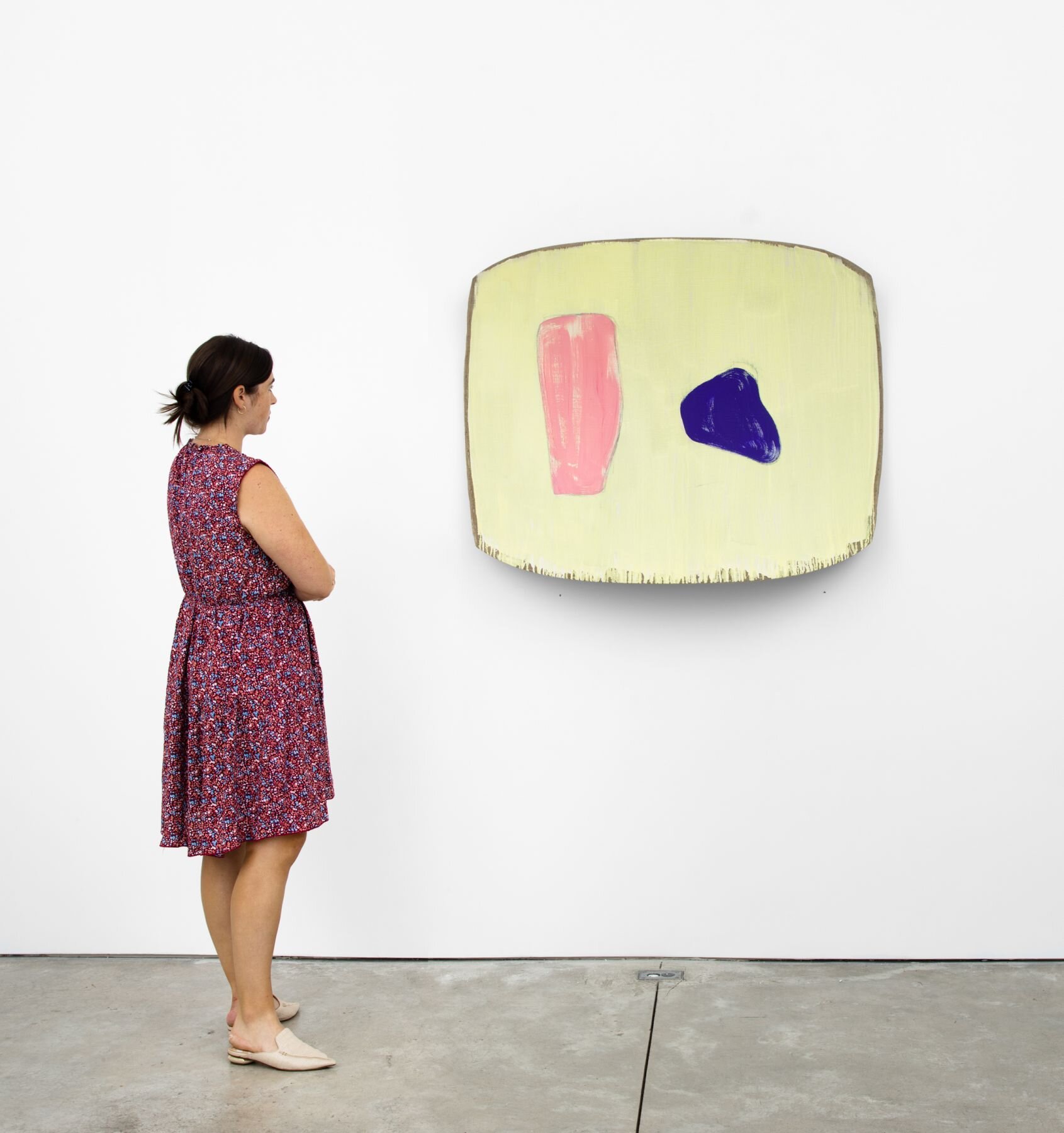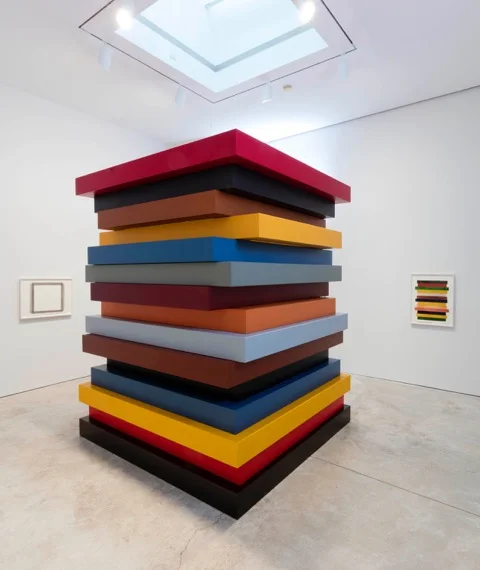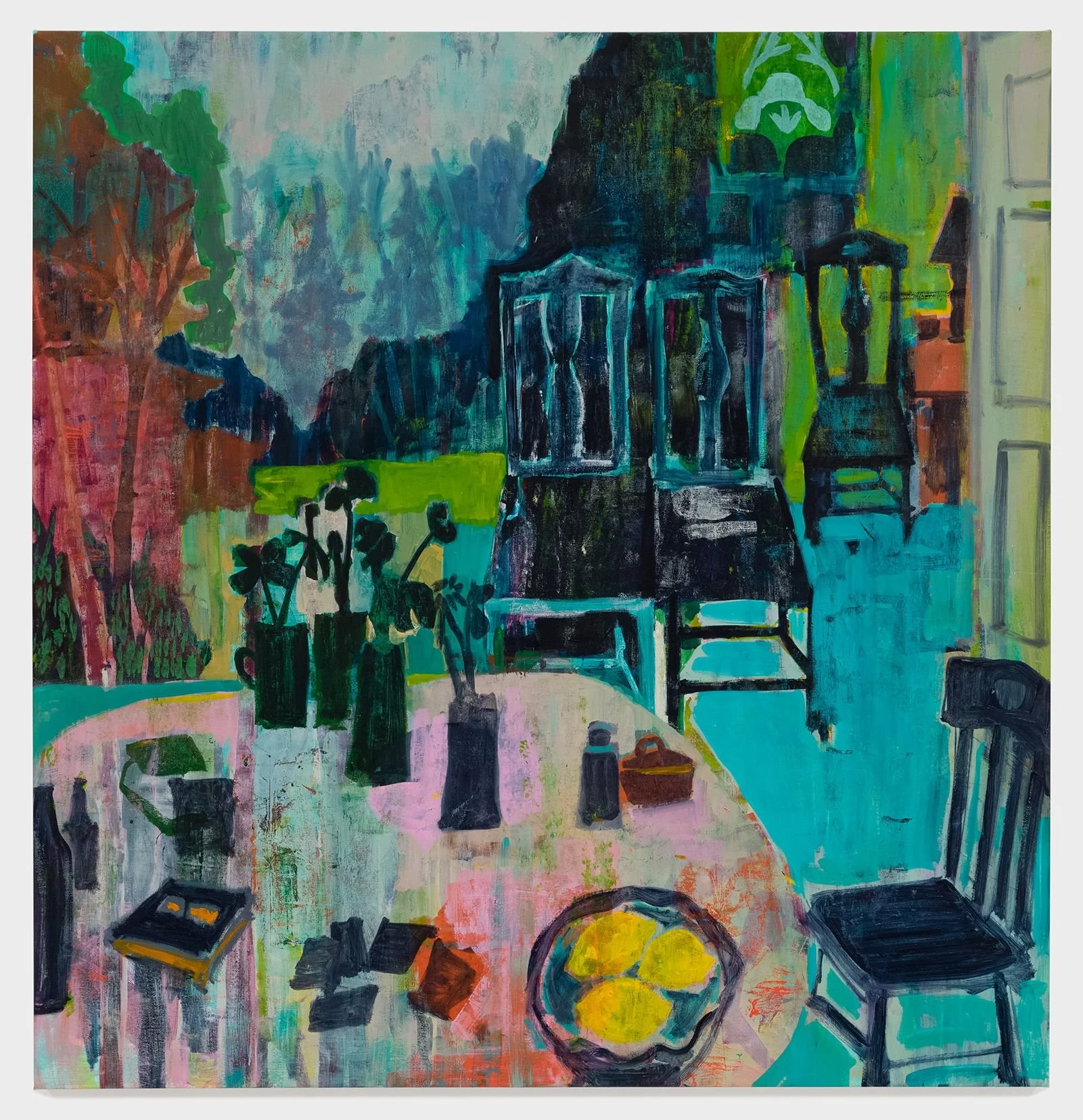Ron Gorchov
The Last Paintings, 2017-2020
New York, 547 West 25 Street
Ron Gorchov passed away last year in Brooklyn on August 18, 2020, at the age of ninety. These paintings are the ultimate expression of his extraordinarily single-minded painterly vision. In the late 1960s, the artist invented a curved, saddle-like stretcher that creates a painting surface that is simultaneously convex and concave. The structure seems to “imbue the works with an altogether different energy, appearing as if to flex or spring away from the wall.” 1 While virtually all of the works contain the same basic elements, two abstract shapes that relate to one another within a colored field, “the distances the artist can travel within the self-imposed restrictions of his chosen format are wide and unpredictable.” 2
Ron Gorchov Rhexenor, 2019 Oil on linen 35 1/4 x 44 1/2 x 9 inches 89.5 x 113 x 22.9 cm
This structural invention is an important addition to the shaped paintings developed by a generation of postmodern artists during the late 1960s and early 1970s such as Elizabeth Murray and Ellsworth Kelly, among others. Cheim & Read inaugurated its Upper East Side venue at East 67th Street with Ron Gorchov: At the Cusp of the 80s, Paintings 1979–1983 in September 2018, which explored the artist’s expressive, lyrical works; this exhibition by contrast returns our focus to the core of the artist’s practice, which is more compositionally restrained. This exhibition is comprised of a group of intensely pigmented, vividly animated works that constitute Gorchov’s final testament.
In his essay, “Lucky Painter,” Schwabsky reminds us that the shape of the painting’s support is not the only thing that individuates Gorchov’s art, and suggests that Gorchov’s acceptance of the accident lends the painting a mind of its own. “These passages are highly variegated, and serve as a record of the paint’s own adventures than the artist’s will.”
In these dazzling works, we see the cumulative joy the act of painting brought Gorchov, and together, they demonstrate his lifelong dedication to his project. Looking at the canvases he completed in the last year of his life — Mocking Bird, Sir James Jeans, and July 4 — one is reminded of Titian, whose color and brushwork attained new heights of freedom while he, like Gorchov, was in his eighties.







